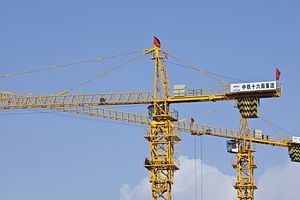Amid the slowing growth and declining operating income of its largest state-owned enterprises (SOEs), China is attempting to reform the state-owned sector while continuing to maintain control. The nation has launched trials to test changes in mergers, salaries, employee shareholding, and corporate restructuring as part of the aim to pilot new SOE reforms. The leadership has stressed that mixed ownership will be extended, although critics have argued that mixed ownership will not (and has not) improve(d) the profitability and management of SOEs.
The state-owned sector faces a decline in operating income of 13 percent this year as profitability falls in heavy industry enterprises. Some SOEs also face potential ratings downgrades due to high leverage and increasing losses; earlier this month, Moody’s moved 38 SOEs to watch negative, a move that precedes a ratings downgrade. In general, it has been true that privately owned firms have regularly outperformed state-owned firms, looking at return on assets.
The issue of low profitability has not been ignored. Already, many uncompetitive SOEs in heavy industry suffering from excess capacity (as in the cement, steel, glass, and coal industries) have been restructured. In addition, SOEs are undergoing mergers and acquisitions in order to reduce the total number of SOEs. Structural SOE reforms are underway in the electricity industry, the petroleum and natural gas exploration systems, the state forestry industry, water conservancy firms, and state-owned rural cooperatives and farms. Going forward, Premier Li Keqiang has stated that local governments are to be granted more power over SOE reform. In addition, the obligation for SOEs to operate social programs will be reduced to promote firm competitiveness.
The State-owned Assets Supervision and Administration Commission (SASAC), the Ministry of Finance, and the National Development and Reform Commission determined that SOEs must become more market oriented, laying out guidelines at the end of last year on how to increase the market orientation of SOEs and promote mixed ownership. Indeed, SOE reform has been centered on bringing about higher levels of mixed, or partially private, ownership.
However, as Curtis Milhaupt and Wentong Zheng write in a Paulson Institute Memorandum, China’s focus on increasing mixed ownership will not bring about major change. The state does not exercise extensive control over the daily management of SOEs, while it can also be said that the private sector functions in close connection to the state, blurring the implications of expanding private ownership in SOEs. Therefore, rather than focusing on pushing forward with mixed ownership in SOEs, regulators should focus directly on improving the market orientation of SOEs.
Given the regulations surrounding asset sales, mixed ownership is not necessarily the answer to poor performance in the SOE sector. As Chen Long pointed out last year in a blog for the Financial Times, the regulations that guide pricing of state assets render investment in poorly performing SOEs unattractive. Shares in SOEs must be sold, at a minimum, at book value. Long also pointed out that in practice, mixed ownership may mean that new ownership comes from other state-owned enterprises, rendering the intention to improve market competitiveness and profitability moot.
So what will SOE restructuring imply for China’s future economic growth? SOEs are to be characterized into those that exist for commercial purposes and those that serve the public interest, and will also be classed by industry, in terms of the reforms they are likely to undergo. In some cases, the focus on mixed ownership or mergers and acquisitions (which only increase the market power of some firms) may be less effective for growth. In other cases, whittling down the size of firms that have reached overcapacity in recent years may improve the competitiveness of these firms. In other words, in the usual econspeak, the answer is “it depends.” It’s somewhat anxiety-producing, since results could move growth in either direction. Effects will certainly be mixed.
































